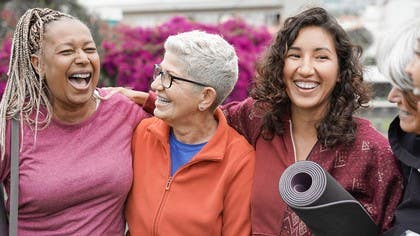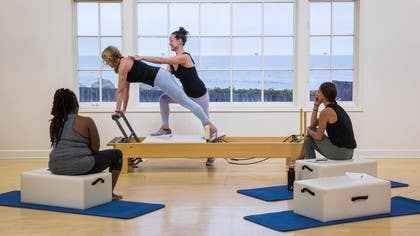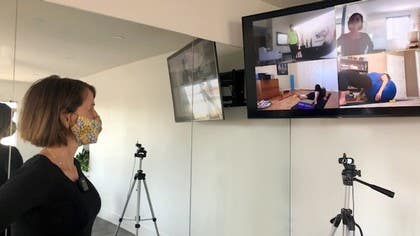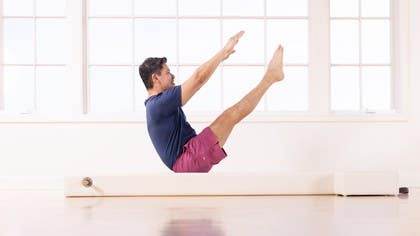
Our "State of the Pilates Industry 2021" Survey Results
Mid-pandemic, the landscape had shifted dramatically, with studios shuttered, instructors and students migrating to Zoom, and on-demand workout providers seeing both increased demand for their services and increased competition. Were these shifts permanent, or would enterprising Pilates professionals and enthusiastic practitioners adapt to the changes and even grow to embrace them? We set out to find the answer.
Depending on where in the world you are living, you may still be experiencing the effects of Covid-19, or life may seem to be getting back to normal (whatever that is). In this article, we’re crunching the numbers and making some predictions about the future of our industry. We’re looking specifically at the experience of Pilates practitioners and enthusiasts, rather than professionals. Future blog posts will take a look at the experiences of both instructors and studio owners. Read on and let us know your thoughts in the comments section below.
How the Survey was Conducted
We designed our survey to provide a comprehensive look at the way Pilates is being practiced right now. We emailed a link to the survey to subscribers of Pilates Anytime, and we provided links to the survey via our social media channels on Instagram and Facebook. The survey was open to all, it was not limited to subscribers, and there was no incentive for participating. It was totally voluntary. We received more than 1500 responses from people in all 50 of the United States as well as from Australia, Canada, and the United Kingdom. The majority of our respondents lived in large, populous states such as California, New York, Florida and Texas.
The Student’s Experience
Slightly more than a third of our respondents identified themselves as Pilates enthusiasts or practitioners, rather than studio owners or instructors. Of these, more than 72 percent of respondents indicated that they started their Pilates practice during the pandemic. Of those who practiced prior to the pandemic, the majority took group classes at a studio (66%), with the next largest groups practicing online (32%) and taking private sessions at a studio (20%).
Of those who tried Pilates for the first time, the most common ways they heard about Pilates included being offered a free online class, hearing about Pilates from a friend, reading something about Pilates, and seeing something about Pilates on social media.
During the pandemic, the majority of our respondents practiced Pilates with an online subscription (69%), followed by Zoom classes with a teacher (32%). Smaller numbers of them continued to practice at a studio (15%) or via YouTube classes (15%). Among our respondents, on-demand classes, or video libraries of pre-recorded classes that can be accessed at any time for a single monthly subscription fee, were much more common than Zoom classes, which tend to be more expensive and occur at a particular time, like an in-person class. One other significant difference between Zoom classes and on-demand classes is that Zoom classes are interactive, with teachers able to offer feedback in real time.
A majority of respondents (47%) reported that they have been practicing Pilates more, not less, during the pandemic, with about one quarter of respondents practicing the same amount of time and another quarter practicing less often. With more than 70 percent of respondents choosing “Convenient” to describe their pandemic Pilates practice, it makes sense that the majority of them were practicing either more often or the same as before the pandemic. Other top responses to the “How would you describe your Pilates practice during the pandemic?” include “Challenging” (33%) and “Provides a sense of community” (14%).
Practicing Pilates benefited our respondents in many ways, and our survey asked respondents to check all that applied to them. The most commonly reported benefits were “reduced stress” (63%), increased flexibility (60%), increased muscle strength (59%), maintaining muscle tone (60%), and providing mental clarity (45%).
We found it interesting that our respondents echoed what our colleagues in the Pilates equipment industry had reported to us: more and more people purchased Reformers for home use during the pandemic. Nearly one fifth of our respondents reported purchasing Reformers during the pandemic. Other popular props included Magic Circles (30%), Foam Rollers (20%), balls (30%) and Therabands (29%). Most of those who purchased either Pilates apparatuses or small props did so because they wanted to have more variety in their workouts or missed the equipment they had used at their Pilates studios.
A “Hybrid Practice” Emerges
Anecdotally, we had been hearing about studio closures and certainly the Covid restrictions made the old business model unsustainable for many studio owners. Nevertheless, more than two thirds of our respondents indicated that the Pilates studio where they practiced before the pandemic remains open today.
When asked if the number of Pilates studios in their community had changed, approximately two-thirds said the number was about the same, with one third reporting fewer studios.
Most respondents (40%) said they plan to return to in-person practicing at a studio, with the remaining 60 percent equally divided between those who do not plan to return and those who are not sure if they will return to in-person. Although the Delta variant had not emerged at the time of the survey, more than half of respondents indicated that the availability of a Covid vaccine (or vaccines) did not change where they practiced Pilates.
Moving forward, most respondents indicated that they planned to keep practicing Pilates at home (62%), presumably either with a self-practice or via video-on-demand or Zoom workouts, with the next largest group (35%) saying they planned to go back to practicing at a studio. Thirty percent of respondents predicted that they would have what we are calling a “hybrid practice” of online and in-studio workouts.
In the coming weeks, we’ll look specifically at how Covid-19 has changed the business model of teaching Pilates and owning a Pilates studio, and how creativity and adaptivity has really changed the game for instructors. Let us know more about the state of your Pilates practice in the comments section below.
Comments
No comments yet. Be the first!













You need to be a subscriber to post a comment.
Please Log In or Create an Account to start your free trial.